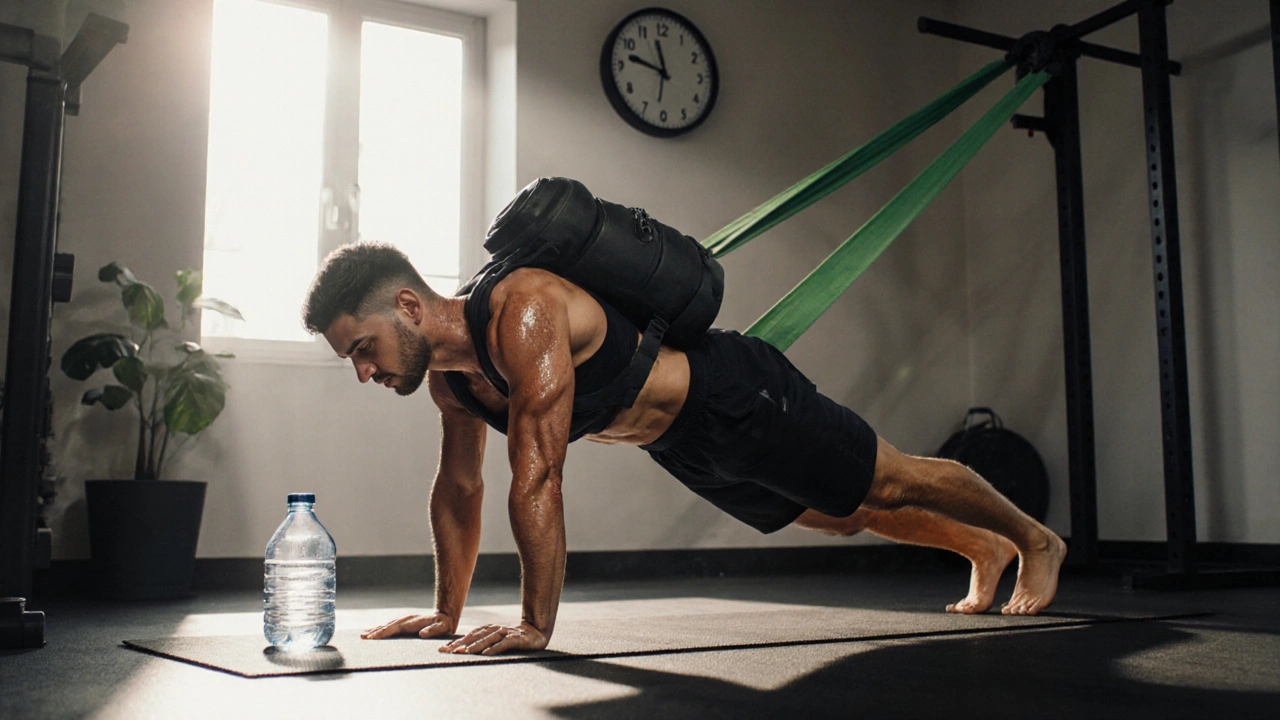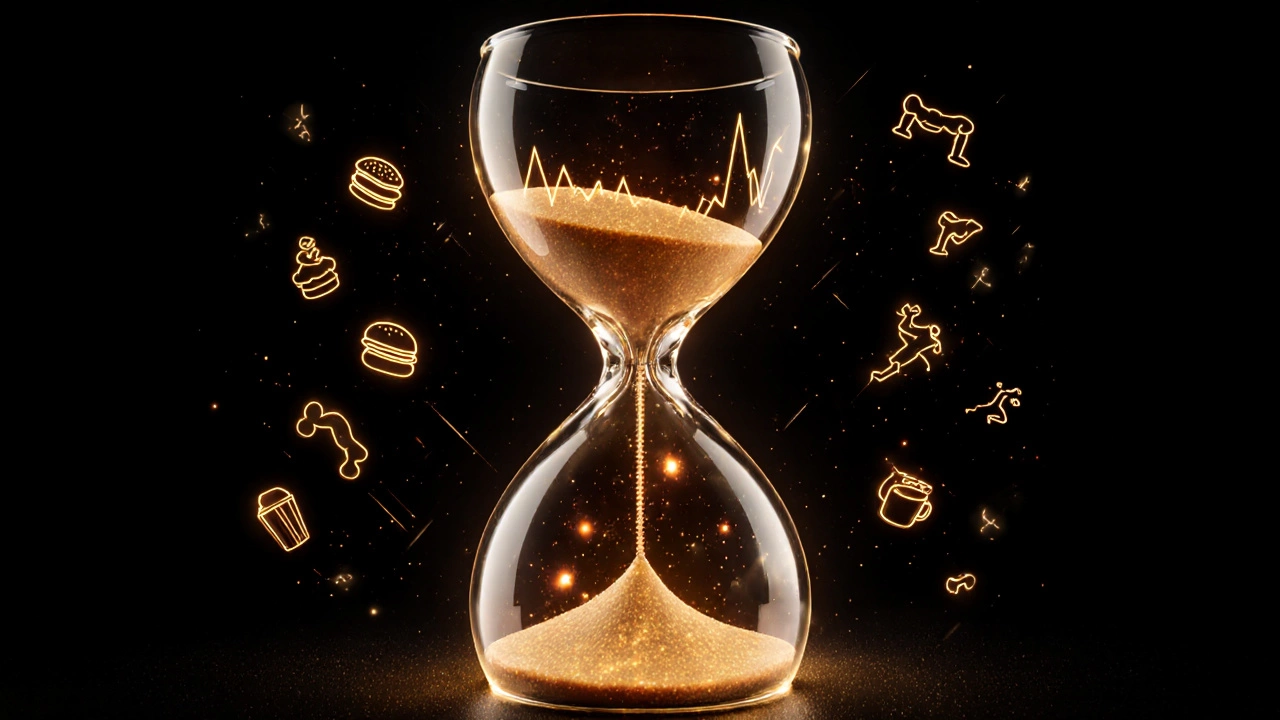
How many times have you stared at your workout plan, clock ticking, and wondered: Is 1 hour home workout enough? You’ve got the mat, the dumbbells, maybe a resistance band. You’ve cleared the living room. You’ve even put on the right shoes. But after 60 minutes, you’re sweating, tired, and still not sure if it’s actually working.
The truth? One hour at home can be more than enough - if you know how to use it. But it can also be a waste of time if you’re just going through the motions. It’s not about the clock. It’s about what you do inside that hour.
When people ask if an hour is enough, they’re usually asking one of three things:
Each of these needs a different kind of effort. A 60-minute walk won’t build muscle. A 60-minute YouTube video with random moves won’t burn fat efficiently. But a focused, well-structured hour? That can change your body.
Here’s what science says: The American College of Sports Medicine recommends at least 150 minutes of moderate-intensity aerobic activity per week - that’s just 30 minutes, five days a week. So one hour, twice a week, already hits 60% of that target. Add strength work, and you’re ahead of most people.
Not all hours are created equal. Here’s how to turn 60 minutes into real progress:
Example: A 60-minute session could look like this:
That’s it. No equipment needed. You’re working your whole body. You’re elevating your heart rate. You’re building strength. You’re done in an hour.
Here’s what most people do wrong in their home workouts:
I’ve seen clients spend 90 minutes a day on home workouts and still gain weight - because they were doing low-intensity cardio while scrolling through TikTok. They were active, yes. But they weren’t training.

Yes - but only if you pair it with food awareness. Exercise alone won’t outwork a bad diet. A 1-hour workout might burn 300-500 calories. That’s one burger. Or a large latte and two muffins.
Real fat loss happens when you create a calorie deficit. That means:
One study from the University of Sydney followed 80 people doing 60-minute home workouts 5 days a week. After 12 weeks, those who tracked their food lost 7% body fat. Those who didn’t - even with the same workouts - lost less than 1%. The workout wasn’t the problem. The nutrition was.
You don’t need a gym to get stronger. You just need to increase demand on your muscles over time.
Here’s how to do it at home:
That’s progression. That’s how you build strength without a barbell.
Same with squats. Start with bodyweight. Add a water jug. Then a dumbbell. Then a backpack filled with books. Each step forces your muscles to adapt.
People think strength training needs equipment. It doesn’t. It needs consistency and challenge.
Cardio isn’t just running on a treadmill. Jump rope? That’s cardio. Stair climbs? That’s cardio. Dancing for 20 minutes? That’s cardio.
One 2024 study from the University of Western Australia found that people doing 30 minutes of HIIT-style home cardio (burpees, mountain climbers, high knees) three times a week improved their VO2 max - a key measure of heart health - as much as people doing 45 minutes of steady jogging.
So if you’re short on time, go intense. Short bursts of effort beat long, slow sessions for heart health and fat loss.

It depends on your goals.
If you’re a beginner: Yes. One hour, 3-4 times a week, is perfect. You’ll see changes in energy, posture, and strength within 4-6 weeks.
If you’re intermediate: Yes - but you need to make it harder. Add weights, reduce rest, increase intensity. You might need to add a second shorter session midweek (like 20 minutes of mobility or core work) to keep progressing.
If you’re advanced: Maybe not. If you’re training for a competition, doing bodybuilding, or trying to hit elite fitness levels, you’ll need more volume or specialized training. But even then, 1 hour of focused work can be your core session. The rest can be mobility, recovery, or skill work.
In Perth, I’ve worked with people who started with 10-minute home workouts because they were overwhelmed. After 3 months of sticking to one hour, three times a week, they:
They didn’t buy fancy gear. They didn’t join a gym. They just showed up. And they made every minute count.
Yes - if you treat it like a real workout, not a chore.
It’s enough to lose fat. It’s enough to build strength. It’s enough to improve your heart, sleep, and mood. But only if you’re intentional. Only if you push yourself. Only if you track progress.
Don’t waste your hour. Don’t just move. Train.
Yes, if you combine it with mindful eating. A 60-minute workout can burn 300-600 calories, depending on intensity. But weight loss happens when you burn more than you eat. Without tracking food, even daily workouts won’t lead to fat loss. Focus on protein, avoid sugary snacks after workouts, and keep portions in check.
Absolutely. Bodyweight training can build muscle if you increase difficulty over time. Start with easier versions of moves, then progress to harder variations - like moving from knee push-ups to full push-ups, then to archer push-ups. Add resistance with household items like water jugs or backpacks. Progressive overload - doing more than last time - is the key, not the equipment.
No. Your muscles need rest to grow. Doing intense workouts every day can lead to burnout, injury, or stalled progress. Aim for 3-5 days a week with at least one full rest day. On off days, do light walking, stretching, or yoga. Recovery is part of training.
Start with 5-10 minutes of dynamic warm-up. Then do 30-40 minutes of strength training using compound moves (squats, push-ups, lunges, rows). Finish with 10-15 minutes of cardio (jump rope, high knees, burpees) or HIIT intervals. End with 5 minutes of stretching. Keep rest periods short (30-60 seconds) to keep your heart rate up.
No. You can do a full-body workout with just your bodyweight. But dumbbells, resistance bands, or a sturdy chair can help you progress faster. A backpack filled with books works as a weight. A towel can help with sliding movements. Equipment helps - but it’s not required.
You’re likely eating more than you think. People often overestimate calories burned and underestimate calories consumed. A 60-minute workout might burn 400 calories - but one chocolate bar can replace that. Track your food for a week. Focus on protein and fiber. Avoid liquid calories. Progress takes time - but if you’re not seeing results after 6-8 weeks, your diet is the issue, not your workout.
If you’ve been doing 1-hour home workouts and not seeing results, it’s not the time - it’s the intensity. Stop guessing. Start measuring. Add weight. Reduce rest. Push harder. Your body will respond.